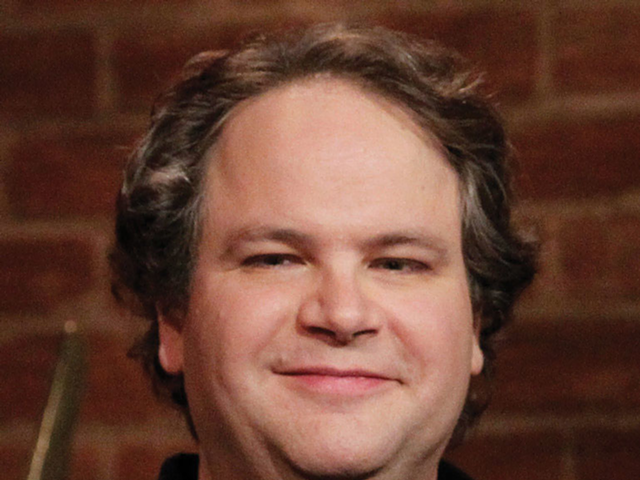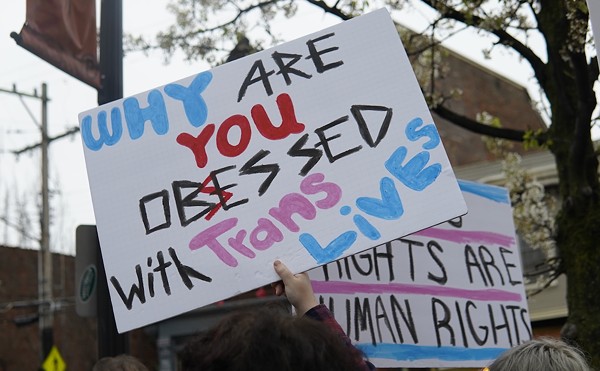T
hirty-five years ago, writer/producer Hugh Wilson transformed his chance bar meeting with an Atlanta radio station’s ad rep into one of television’s quirkiest and most cultishly beloved situational comedies.
After its wobbly Sept. 18, 1978 debut, WKRP in Cincinnati eventually became a don’t-miss show with music aficionados, attracting a loyal Queen City audience with its spot-on local references.
The show’s premise of a Cincinnati radio station’s slow ratings rise after a hotshot program director implements a freeform Rock format — where the jocks program their own shows — was reminiscent of real Cincinnati FM station WEBN’s backstory. When WKRP hit the air, WEBN was a dozen years deep into its Rock direction and headed for its status as a local radio titan, one that ultimately brought home scores of national broadcasting awards.
Despite obvious parallels, WKRP wasn’t based on any single station, but combined characters and stories that Wilson had encountered over the years. The wild and wooly DJ Dr. Johnny Fever’s character was based on an Atlanta DJ named Skinny Bobby Harper — who worked at Cincinnati’s WSAI in the early ’60s — and WKRP owner Arthur Carlson was modeled on a station manager who actually conceived the live turkey drop featured in one of WKRP’s most popular episodes.
Gary Sandy, the actor who played calm, cool program director Andy Travis, notes that he based his portrayal on top Los Angeles program director Steve Marshall. Sandy, a Dayton, Ohio native who was theater-trained in New York, contacted Marshall at Los Angeles’ KNX-FM after securing the WKRP role. In a method-acting move, Sandy’s discussions with Marshall ultimately led to him convincing WKRP’s producers that actors Howard Hesseman (Fever) and Tim Reid (silky smooth DJ Venus Flytrap) should be as free to choose music as their characters.
Sandy describes how Marshall ended up on the show’s writing staff: “Steve (Marshall) befriended me, took me around the station and showed me what would happen,” Sandy says. “At one of our meetings, he said, ‘I wrote a script. Would you give it to Hugh and the boys?’ I said, ‘Let me tell you the person to get it to, and you’ll have a better shot.’ They hired him on the writing staff and he quit his job at KNX-FM, so I had a real program director on writing staff. He was the guy who always had my back, saying, ‘That wouldn’t happen.’ And I let it be known to Howard and Tim, if they wanted advice on one song as opposed to another, ask me and I’ll tell you what I think, but you should do what you want to do. Basically, Gary’s attitude about what Tim and Howard should be able to do mirrored how they were writing the Travis character.”
For former WEBN program director Denton Marr, an expatriate from both Cincinnati and radio (he asked that his current location not be revealed for privacy reasons) now doing nonprofit fundraising, there was one correlation to his fictional counterpart that was nonexistent.
“Andy Travis was much more handsome and I’m sure still is to this day,” Marr said with a wry laugh during a recent phone interview.
Marr notes the family ownership of both stations — Mother Carlson was WKRP’s tough owner, and the Wood family held the reins at WEBN — but says the differences were significant.
“I was interviewed for an Associated Press article and the guy asked me about Johnny Fever and I said, ‘Look, I’ve got guys that make Johnny Fever look tame,’” Marr says, referring to the unhinged, bleary-eyed and usually stoned DJ character on the show. “It was really true. We had a number of eccentric people — past, present and future — at WEBN.”
As far as WKRP’s depiction of ’70s radio, there must have been people who shared Brian O’Donnell’s opinion. The former WEBN DJ and longtime Cincinnati radio personality (now with WGUC and WNKU) was not exactly a fan.
“You’d hear an occasional record you liked,” O’Donnell says. “There were similarities, but everything was taken to a much more extreme level than in real life. To an outsider, I could see why it would have been fun. Andy Travis seemed the most believable to me, but (the others) wouldn’t have held jobs, I don’t think.”
Marr takes a slightly brighter view of WKRP’s fictional take on real radio situations.
“I found the show charming,” Marr says. “It seemed put together by people who had been around the characters you meet in radio. In that sense, it was true to the genre, but it was TV so it had to be exaggerated. People would say, ‘Is that what really happens around the station?’ and the answer was never quite so simple.”
Over the years, Sandy has talked about WKRP with hundreds of radio people, as professionals and as fans, and he’s identified a consistent theme.
“I get emails all the time from radio people across the country that say, ‘You guys are the reason I’m in this business,’” Sandy says. “That television show had an effect on anybody that was young that ever thought about going into the business.”
The indisputably correct aspects of WKRP were the local references peppered throughout the show, from the ephemera hanging on the walls (Playhouse in the Park posters, the ubiquitous Cincinnati cartoon map) to appropriate props everywhere (like copies of the Enquirer and Cincinnati Magazine, plus Reds/Bengals/UC gear) to local/regional script mentions (Fountain Square, Good Samaritan Hospital). The show also did a special episode about the station’s sponsorship of a Cincinnati concert in 1979 by The Who at Riverfront Coliseum, where 11 fans were tragically killed in a stampede to get into the concert.
“There was a guy on writing staff from Ohio, and he knew all the towns and they would get them in there — you know, Wapakoneta,” Sandy says with a laugh. “But when I found out the show was going on the air, I made two phone calls, to the Playhouse in the Park and to the Reds organization, because my loves are baseball, the Reds and the theater.
“The person that picked up the phone at the Playhouse was Lynn Meyers (who’d go on to help establish Ensemble Theatre), who I didn’t know at the time, but I said, ‘If you get me paraphernalia, I’ll get it on the air.’ The next day came all of these things, overnight express, from the Playhouse. It took the Reds about a week and a half. And I understand — here comes some yahoo calling and says, ‘Send me a bunch of paraphernalia …’ Yeah, right. But as soon as it came on the air, it was like, ‘That guy was telling the truth!’ I got bats, balls … it was great.”
No one remembers any attempts at cross promotion between the fictional ‘KRP and the real ‘EBN, although O’Donnell vaguely recalls a turkey drop discussion, and Sandy remembers being asked to host the fireworks, which he couldn’t schedule (he was once grand marshal for the Reds’ Opening Day Parade, a thrill for the lifelong Reds fan).
Marr, the former WEBN program director, was only directly involved with one WKRP episode. In the third season, in the only episode partially shot in Cincinnati, newsman Les Nessman was held hostage by a crop-dusting pilot on Veteran’s Day who threatened to crash and kill them both if a veteran’s parade wasn’t organized. It was proposed that people honk their car horns at the appointed hour, and every radio station in Cincinnati was asked to promote the cause. The producers got real IDs from area radio stations for the episode; Marr’s promo for WEBN was the last one aired in the scene.
“That was my claim to fame,” Marr says.
Perhaps the big reason for no actual promotions between the show and its closest local Rock counterpart was the show’s premise. As Marr notes, WKRP was dead last in local ratings when the show began and its four-year run charted the station’s incremental rise in listenership. WEBN had already lived that particular story.
“By then, WEBN was becoming very successful,” Marr says. “It had struggled, much in the way WKRP did, in the early days, but by the time the show came out, WEBN was a contender and one of the most profitable stations in town.”
The sources interviewed for this piece shared an intense passion for all facets of their chosen path, whether factual or fictional. Sandy, the actor who played program director Andy Travis, may have summed it up best.
“I’ve always wanted to be an actor, I’ve always loved music and I’ve always been a fan of radio,” he says. “And I thought, ‘Isn’t this great that I’m on a series that has to do with all three of those things?’ It was a great, great job.”
©
Click here to read Mike Breen's rundown of "fun facts" about WKRP's music connections and how the show helped turned him into a lifelong music fiend.






